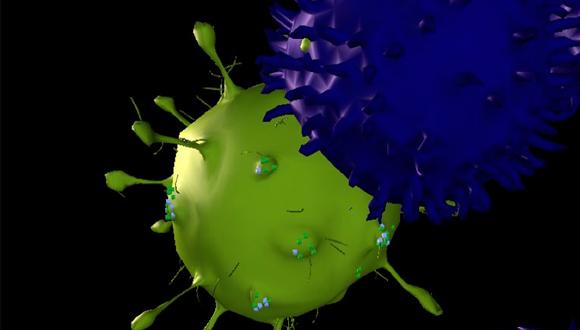Tools and Algorithms - Cell Studio - Agent Based Modelling platform
Cell Studio - Agent Based Modelling platform
Cell Studio is a unique platform for modelling complex biological systems. Cell Studio provides the infrastructure to model biological, biophysical, bioinformatics and chemical data. It further allows to perform multiple repetitions using parallel computing. The use of Cell Studio is done using an advanced environment specifically designed for non-coding researchers, including a visual interface,
For more information:
Prof. Uri Nevo - nevouri@tauex.tau.ac.il
Ella Wilcyznski - ellaalon@mail.tau.ac.il
Purpose
Realistic describtion of a multi-scale, hierarchical system that operates at molecular, cellular, tissue and organ levels (e.g. the immune system).
The Platform
Spatiotemporal modelling of biological systema is a complex multi-scale computational challenge. This is due to the high number of sub-processes involved, each with its own features. One way to overcome these issues is to use an agent-based model (ABM), in which, the behavior of each element defines the main features of a system. Cell Studio, adopting this paradigm, proposes the cell as a native agent whose interactions with proteins, molecules, medium and other cells, define the main features of a biological scenario.
Each in-silico experiment in Cell Studio begins with scenario and with initialization of parameters (many such can be run in parallel, similar to in-vitro multi-well plates), where each cell is an agent in the simulation, and has its type related properties, e.g. a particular type of T-cell. Further configurable properties for each cell population may be their amount, spatial distribution, composition of membranal receptors and more. Each property value in the simulation is derived from a defined distribution, to mimic experimental diversity. In addition, the user may define other environmental properties such as the medium, spatially separated regions, etc.
Outputs
During runtime each cell is individually monitored for its state and dynamics. It can undergo such events as binding of its surface receptors to a neighboring membrane bound molecules for a cell-cell interaction, responding to certain molecules or to the gradient of concentration (chemotaxis), proliferate (or die), changing morphology and more. The cells (agents) reaction may be secretion of molecules, change in expression level of membrane proteins, change of internal states etc. In addition, the medium of the simulation is also specified, including diffusion or flow of soluble factors.
Model development
The user chooses which interactions are necessary to describe a particular process. To that end, for each unique project, a comprhansive mathematical model should be developed with the user, based on an understanding of the key interactions, the surroundings and the involved cellular pathways. Using these, the model will provide the equations that desctibe the kinetics of the system. It should be noted that this process demands and involement of the user and a deep level of knowleedge of the biological system to be modelled.


